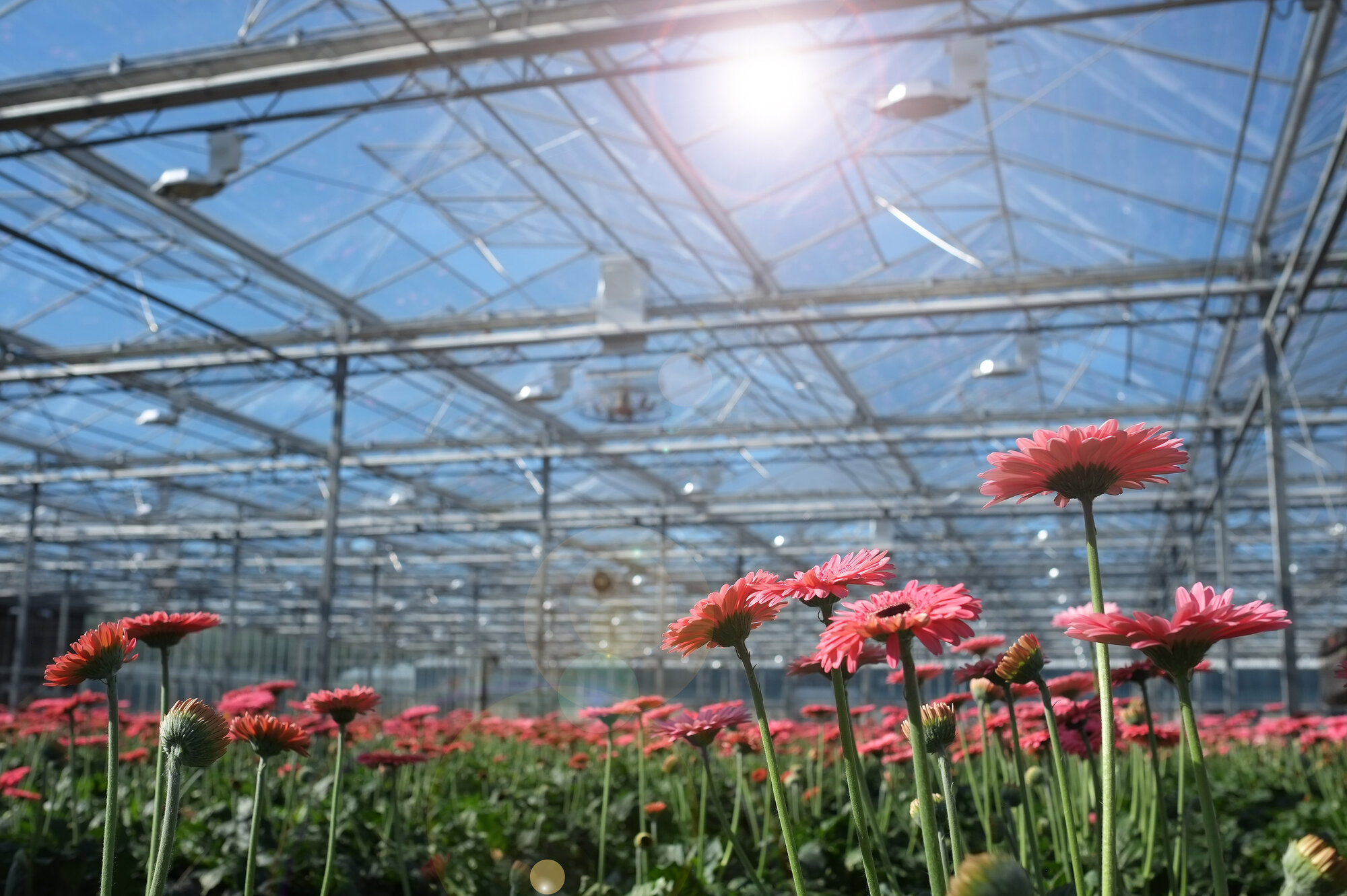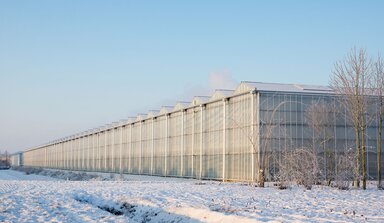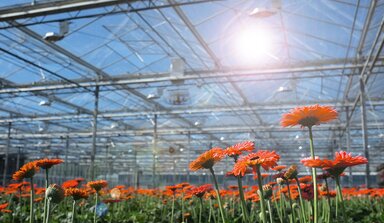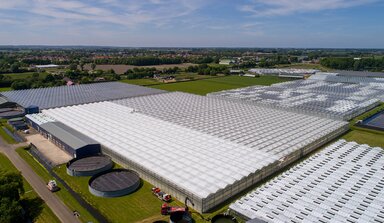How does AntiReflect work?
AntiReflect reduces the difference in refractive index between air and glass; that is why the greenhouse receives more sunlight.
Light rays change direction when they enter one medium (glass) from another medium (air). The extent to which they change direction is determined by the refractive index of the material. The refractive index is also the determining factor for the reflection on the material. The more the refractive index of two materials differs, the more reflection.
The refractive index of air amounts to approximately 1, that of glass to 1.5. Using a certain formula, the Fresnel equations, it can be calculated that in that case more than 4% of incident light is reflected. This occurs again when the light exits on the other side of the glass. AntiReflect reduces the refractive index to approximately 1.3. Consequently, there is less reflection and more light enters the greenhouse. It would be even better to coat the inside of the greenhouse roof, which will also reduce the reflection there. However, practically, this is not yet possible.
Measuring hemispherical light transmission
When light falls onto a greenhouse roof, glass or plastic, three things always happen. A large part goes straight through the glass or plastic, which is known as the transmission. Part of the light reflects on the roof; that is the reflection. The third part is called absorption: this is the solar radiation that penetrates the material, but does not come out on the other side. This absorption causes the glass or the plastic to warm up. Together, transmission, reflection and absorption always lead to 100% of the solar radiation.
When light falls perpendicular to a glass roof, 90% goes through it. But not all the light falls perpendicular to the glass: a large part comes from another angle. That is why the transmission should always be measured hemispherically (from all angles) in order to get a clear picture of the actual transmission. The lower the angle of incidence, the lower the transmission and the higher the reflection. In countries in North-West Europe the light in winter falls at a lower angle, making the reflection significant.

Light gain
AntiReflect reduces the reflection of all angles of incidence by at least 3%. Measurements taken at the Light Lab at Wageningen University & Research show that light gain with this coating is the highest at an angle of 60°. This angle of incidence is particularly common in North-West Europe and Canada.
Antireflection layers are used in many industries, but the techniques are not easily translated into greenhouse applications. The first condition is that reducing the reflection must not be at the expense of the transmission as this would evaporate part of the light gain. The second condition for the development of this coating is that it has no impact on the ratio of the colours of the light spectrum. The transmission gain across the entire light spectrum is the same. AntiReflect is based on nanotechnology and is derived from techniques that are used in solar cells and in space technology, among others. The revolutionary coating is the result of years of research and development.


